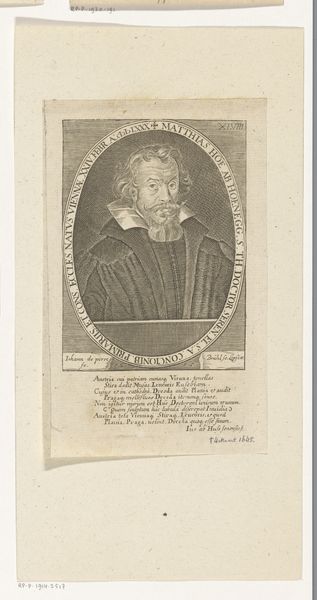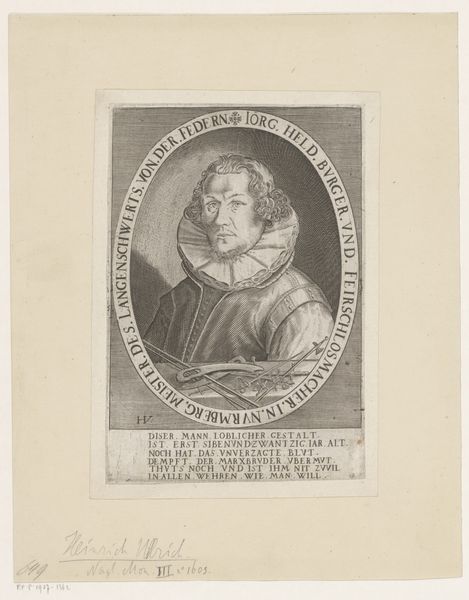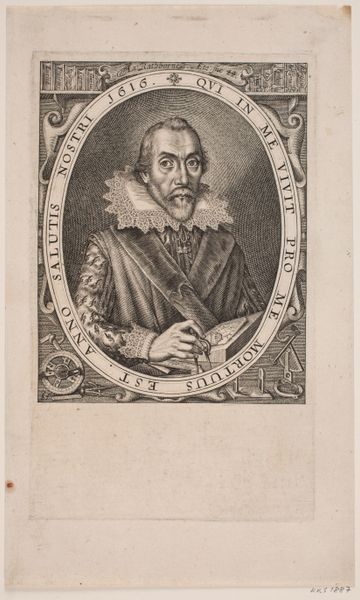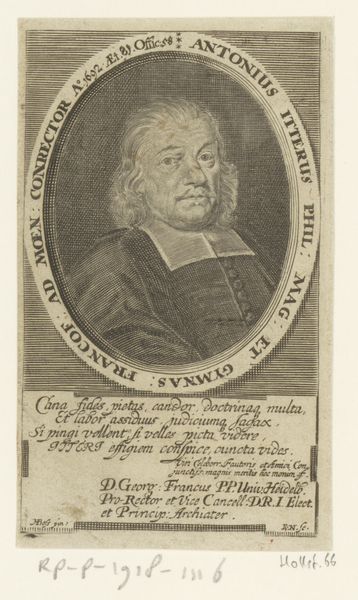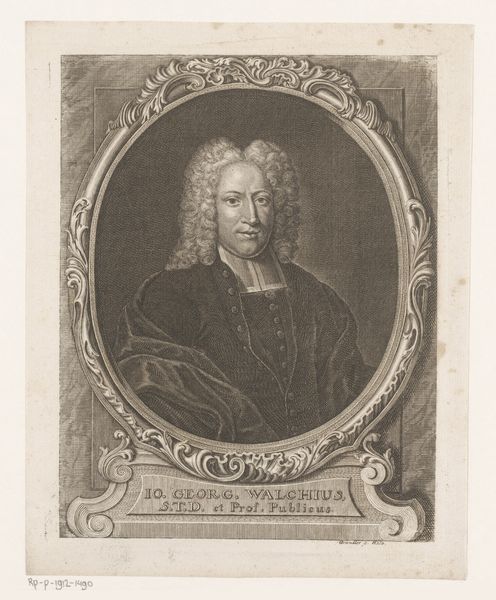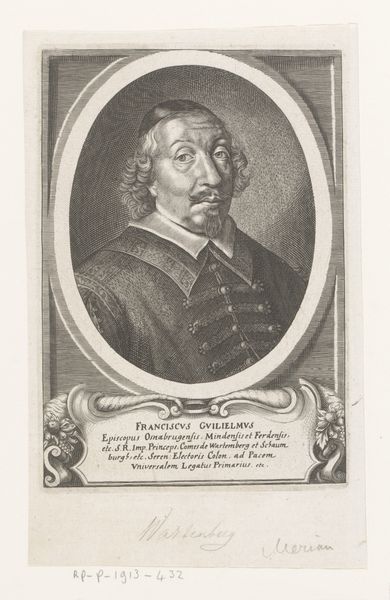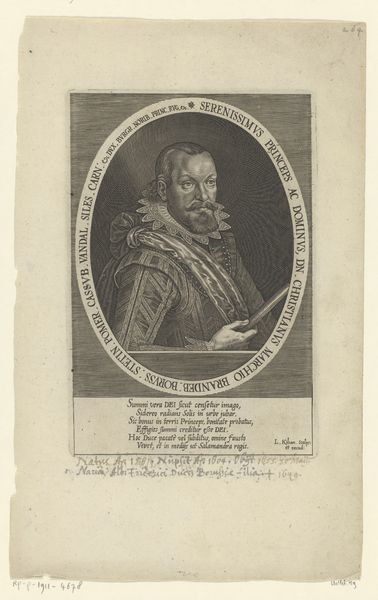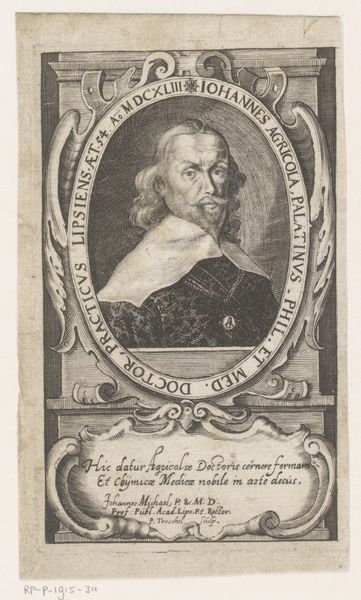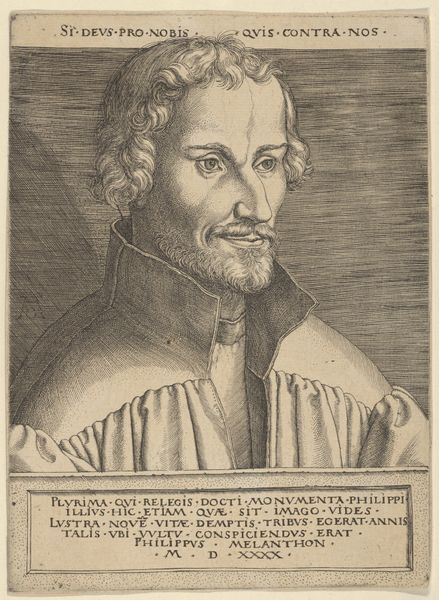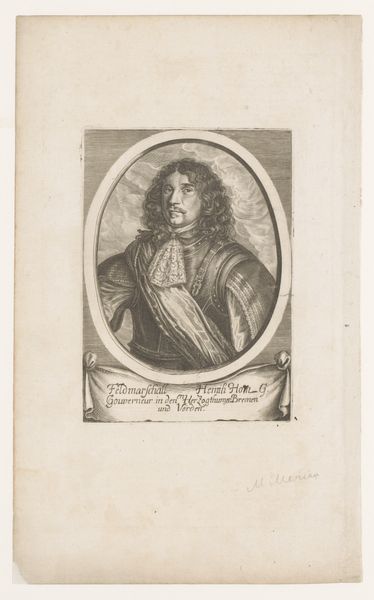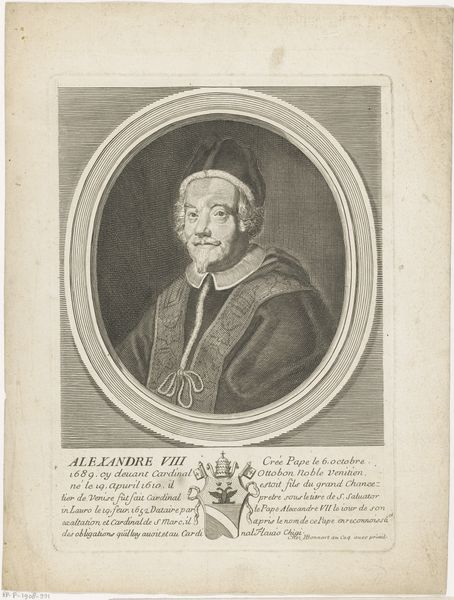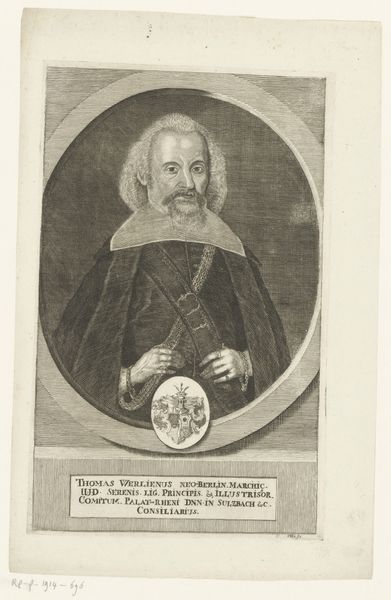
print, engraving
#
portrait
#
baroque
# print
#
academic-art
#
engraving
Dimensions: height 156 mm, width 102 mm
Copyright: Rijks Museum: Open Domain
This is Johann Friedrich Schmidt's "Portret van Guy Patin," made around 1672 using engraving. Engraving is an intaglio process. The artist uses a tool called a burin to carve lines directly into a metal plate, in this case probably copper. The depth and spacing of these lines create the image. The plate is inked, the surface wiped clean, and then the print is made by pressing paper against the plate with considerable force. Notice the incredible level of detail Schmidt achieves. The cross-hatching builds up the shadows, giving Patin’s face a compelling three-dimensionality. What is so special about this technique, is the level of skill that is required to create such a detailed image. Schmidt had to be an expert craftsman to achieve such precision, a testament to the skilled labor involved in traditional printmaking. Looking closely at the material qualities and the making process reveals a lot about the social and cultural context of this portrait. Engravings like this one were relatively inexpensive, thus very good at circulating images and ideas widely, contributing to the growth of public knowledge and discourse in the 17th century.
Comments
No comments
Be the first to comment and join the conversation on the ultimate creative platform.
